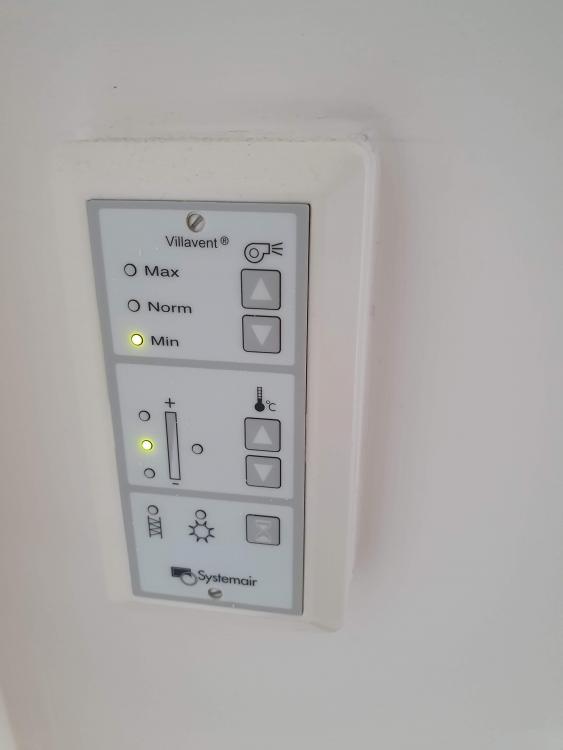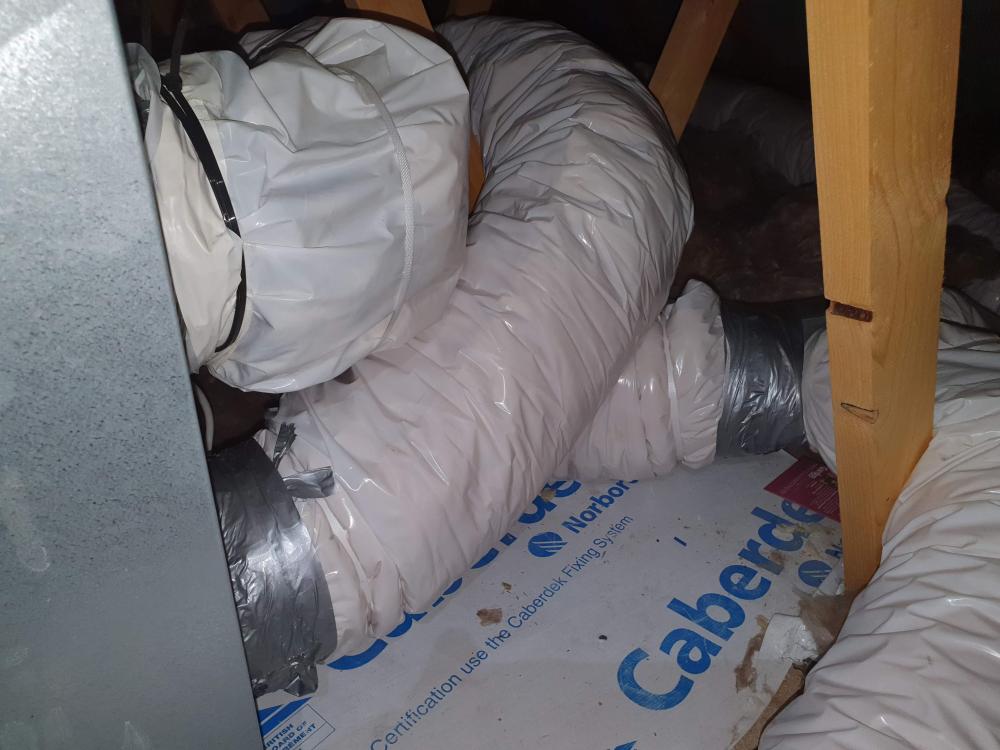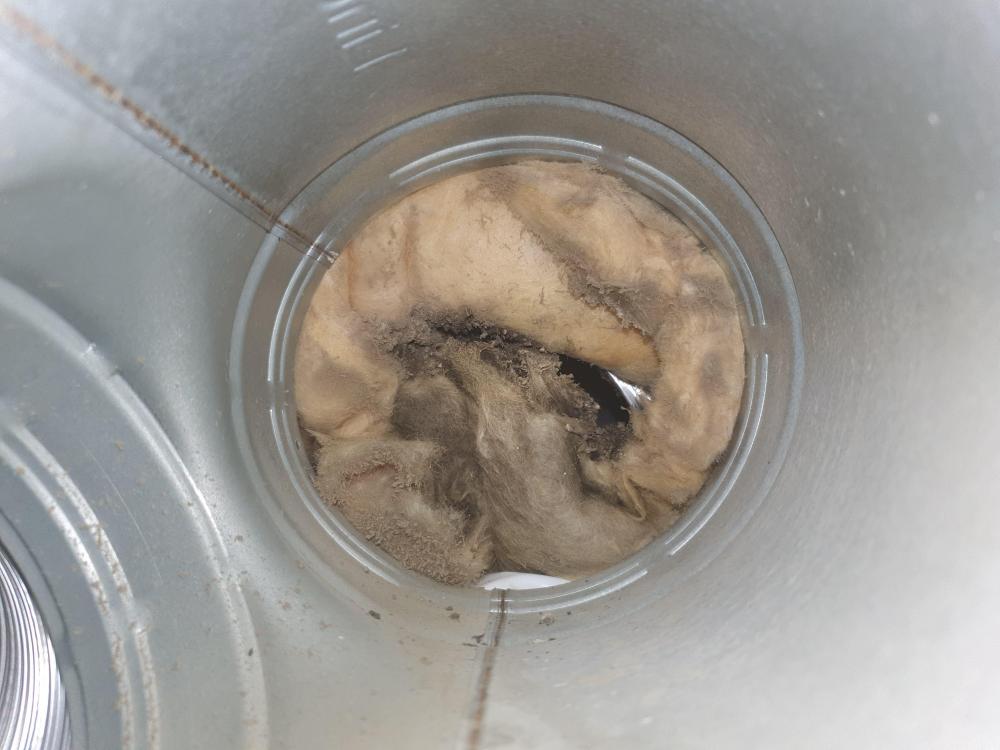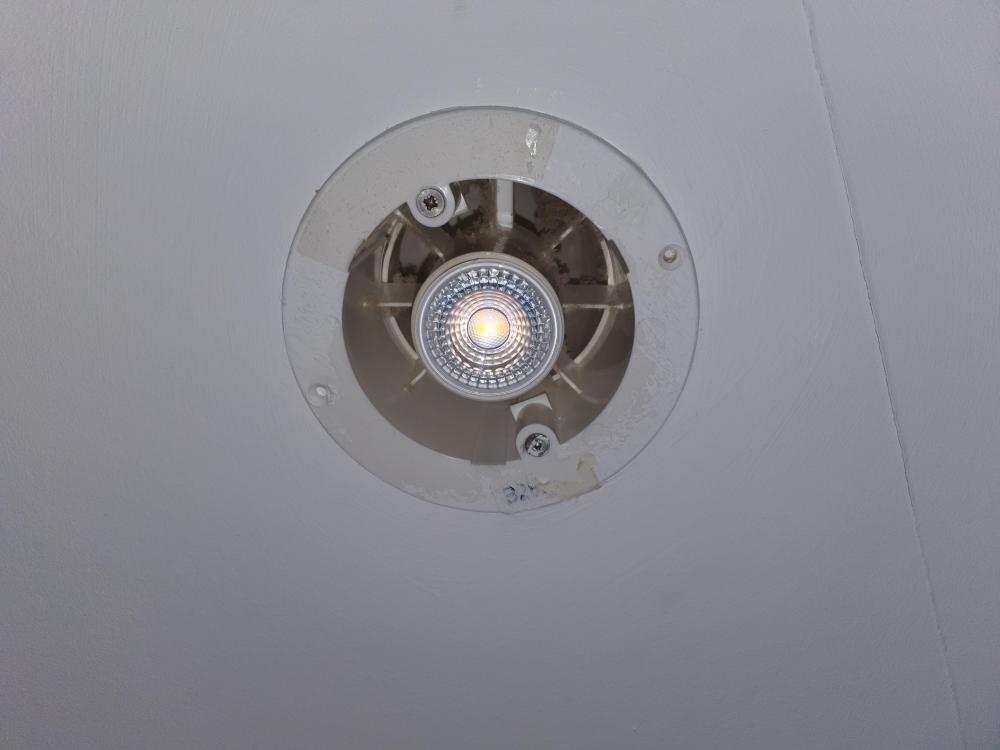
JamesJJJ
Members-
Posts
34 -
Joined
-
Last visited
Recent Profile Visitors
The recent visitors block is disabled and is not being shown to other users.
JamesJJJ's Achievements

Member (3/5)
1
Reputation
-
We have u/f heating throughout the ground floor and it works as expected except for 1 zone - the porch area. This area is approx 3.5m2. Floor temp is usually around 26C in all areas except the porch, which is normally <20C even after days of running. I can adjust the flow to this area anywhere up to 6l/min (according to the flow meter) against my calculated theoretical requirement of 0.5l/min, but even at 6l/min the floor/room does not heat properly. This room has always been a problem; it has never heated properly. We never see any pressure loss so I dont think there is a leak. If it was an obstruction/blockage I would expect to see 0 or low flow? Any ideas what might be wrong? TIA,
-
There are lots of excellent heat loss calculators available for design calculations, but is it possible to measure/calculate heat loss from an existing building and then compare to any kind of benchmark? If I know: The size of the building The amount of gas consumed over a time period (e.g. a week) The average internal temp during the week The average external temp during the week Is there a way of calculating the average heat loss and comparing that to some kind of benchmarks? Reason I ask: My house is a modern house with MVHR (badly installed but corrected by me) and gas c/h. It appears pretty well insulated but I have already observed some air-leaks around doors/windows etc. Whilst I have started plugging those gaps it would be good to calculate the average heat loss and then compare to some benchmarks to see how good/bad the thermal performance of my house is. TIA,
-
Benefit Measurement?
JamesJJJ replied to JamesJJJ's topic in Mechanical Ventilation with Heat Recovery (MVHR)
-
Benefit Measurement?
JamesJJJ replied to JamesJJJ's topic in Mechanical Ventilation with Heat Recovery (MVHR)
I was going to do that at some point but I am more interested in working out the cost (in CO2 and £) of using the unit + less heating vs leaving the windows on vent and running the heating more. -
Power consumption, summer?
JamesJJJ replied to JamesJJJ's topic in Mechanical Ventilation with Heat Recovery (MVHR)
I meant to add, comparing power consumption to flow rates I get the following values: Mode Power Consumption Flow Max 320 100% Normal High 182 92% Normal Low 152 80% Min 95 47% I need to dig back into the unit and see if I can find the elusive dip switches and rotary dial so the speed can be more accurately controlled. -
Power consumption, summer?
JamesJJJ replied to JamesJJJ's topic in Mechanical Ventilation with Heat Recovery (MVHR)
The acoustic duct arrived today and in Villavent land the only thing which identifies this as different from normal duct is a small green sticker on it. I am therefore guessing the lovely acoustic duct is installed under the insulation on its way to the silent bedroom. It would be far easier if the entire white membrane had a green streak in it to clearly mark it out as a silencer. This was relatively easy to fit and I made sure it went around a bend as per the instructions: After turning the unit back on the only thing to be heard was silence, so noise problem solved! I feel much more confident navigating the unit and ducting now, so decided to tackle the main extract duct at the top of the picture. I knew it wasnt properly connected but removal revealed another horror show: I removed all of this, stretched the semi-rigid duct and smoothed the curve (as much as I could) before reattaching: Powering back on the extract was noticeably more powerful especially into the bathrooms with the incorrect terminals! I managed to balance everything out on Max to the following levels: Extract Flow Rate Inlet Flow Rate Master Bedroom 10 Master En Suite 8 Dressing Room 8 Bedroom 2 6 En Suite 8 Bedroom 3 8 Bedroom 4 8 Bedroom 5 6 Bathroom 8 Hallway Kitchen/Family 13 11 Porch Hallway Dining Room 8 Office 7 WC 8 Utility 10 Total 63 64 It is now lovely and quiet everywhere, even on Max. One thing I have noticed is that the unit is drawing even more power. Despite improving the ductwork significantly it is now consuming 180W on Normal mode and 320W on high! The temps have dropped over the last week or so and it was switched from summer bypass to heat recovery. I noticed the control panel has an error on it indicating the rotor motor has failed. Dismantling this I found the bearing was seized so I managed to loosen this with some WD40. I am not holding out much hope and I think the motor will need to be replaced along with the filters in the coming weeks. This unit was introduced back in 2009 so it is lacking any smart features and the only control is via the wired control panel (which lives in our utility). I have therefore fitted a smart plug and that combined with the air quality monitor, temp/humidity sensor and IFTTT means I can start to automate its usage such as making sure the unit is running if humidity in a bathroom increases, or CO2 in our bedroom starts rising above a threshold. Because of its high power consumption I still think opening windows is preferable at this time of year, so the unit can be left off all day and switch on/off depending on various input conditions. -
Benefit Measurement?
JamesJJJ replied to JamesJJJ's topic in Mechanical Ventilation with Heat Recovery (MVHR)
Yes, so this is more focussed on points 1&2 rather than minimising environmental impact under point 3? -
In relation to my other thread which is uncovering a multitude of issues with the mvhr installed in my house I keep coming back to the same point. In my case I think the mvhr was installed as a luxury item to help sell the house; nowhere near enough care was taken in its implementation and commissioning for it ever to deliver it's real potential. This leads me onto a question, how would you go about measuring the benefit of such a system? From what I have learned the benefits of an mvhr are: 1. Cleaner, fresher air. 2. Elimination of damp/condensation problems in wet areas. 3. Reduction in heat requirement as a consequence of reclaiming heat that would be lost to the outside. 1 can be measured with an air quality meter so this is fairly easy? Less dust, fewer chemicals, lower co2? 2 can also be measured with an air quality meter and subjectively the presence/absence of condensation/mould can be seen? 3 is the one I am unsure on. I think this will be massively impacted by ambient weather and building use? As a result I think measuring this cost/benefit ratio would be very difficult? In my case I am trying to work out if the cost of running/maintaining such a system provides benefits which justify this effort/expense vs opening windows and paying more for heating/ventilation. I would think this analysis/calculation applies to anybody considering such a system? Thanks,
-
Power consumption, summer?
JamesJJJ replied to JamesJJJ's topic in Mechanical Ventilation with Heat Recovery (MVHR)
Yes, I am going to put an energy monitor onto the cable so I can keep a proper eye on it. -
Power consumption, summer?
JamesJJJ replied to JamesJJJ's topic in Mechanical Ventilation with Heat Recovery (MVHR)
Completely agree. Everybody here has been hugely helpful and it is already way better than it was... -
Power consumption, summer?
JamesJJJ replied to JamesJJJ's topic in Mechanical Ventilation with Heat Recovery (MVHR)
Thats exactly what I bought, they are now nicely fitted and no insulation in the ducts. -
Power consumption, summer?
JamesJJJ replied to JamesJJJ's topic in Mechanical Ventilation with Heat Recovery (MVHR)
To answer my previous question I dont think you do. My voyage into the world of mvhr has uncovered some lovely installation/service bodging. I managed to acquire a testo 405 and attempted to balance the house but this proved almost impossible because the bathroom extracts were all near zero. Venturing back into the loft and tracing the extract pipes I quickly realised the bathroom fitting needs 100mm pipe but the t-pieces used were 125mm. Their solution was to use insulation to pad the 100mm pipe up to 125 and tape it in place! I also found the 90deg bends were not attached to the ceiling fittings so all 3 bathroom vents were extracting loft air (well, what could get through the insulation!). I am also not convinced the ceiling fittings are designed for mvhr as opposed to a simple extractor fan with the fan removed! All of the ductwork is beautifully insulated, except the main extract runs from the utility and the kitchen. So the warmest rooms were losing all their heat to the loft! All of the t and y pieces are uninsulated for some reason. It now seems quieter and the extract numbers are way higher. However I notice the main extract duct is attached to the mvhr in a similarly shoddy fashion so must be wasting loads of air velocity there as well. I tested the quiet room up to 13l/s and it was still perfectly quiet, so I think the noise we are hearing is motor related. I have therefore ordered a flexible silencer for the fresh air feed and will install that straight off the unit. Assuming this makes things nice and quiet i will then set about sorting the main extract duct and then go about re-balancing it again. It's really frustrating that this was supposedly serviced a few weeks back and was said to be tip-top when the engineer left... -
Power consumption, summer?
JamesJJJ replied to JamesJJJ's topic in Mechanical Ventilation with Heat Recovery (MVHR)
-
Power consumption, summer?
JamesJJJ replied to JamesJJJ's topic in Mechanical Ventilation with Heat Recovery (MVHR)
Can I check my logic here. If I confirm the flow rate from the silent vent is in the normal 8-10l/s range (i.e. same as the other rooms) then the difference in noise must be down to the ducting or the valve? I have already confirmed the valve is the same, so this would effectively prove the flexible ducting is acting as a silencer and essentially confirm I need to add a silencer? Basically I am trying to ascertain whether the noise is airflow or motor... -
Power consumption, summer?
JamesJJJ replied to JamesJJJ's topic in Mechanical Ventilation with Heat Recovery (MVHR)
With the system on min and the vents opened up co2 peaked at 1205 overnight so better. However, the heater within the unit kicked in for some reason and it burned 9Kw of energy despite the house remaining >19c all night. I can see no evidence of that 8Kw in the room temps, they fell slowly and consistently all night... Out of interest, any idea what the white insulation wrapping is around the ducting, am thinking I might remove it to see if I can work out how to fit a silencer in the right place?







